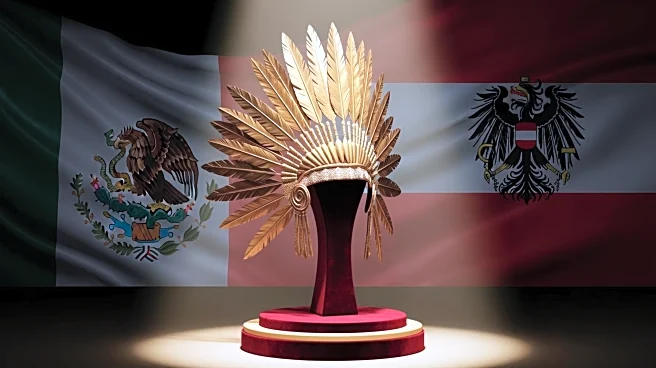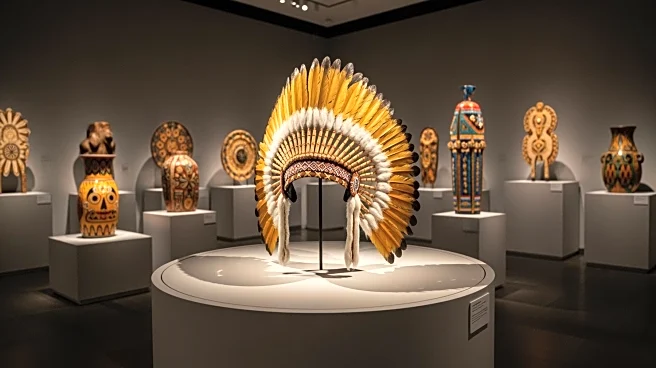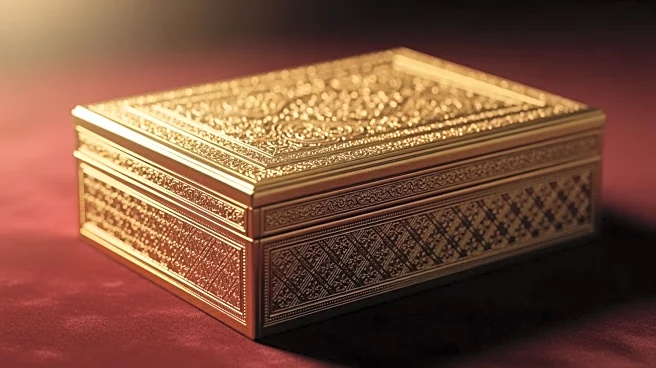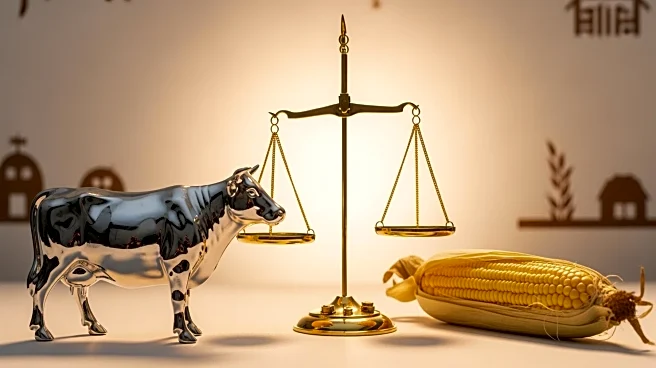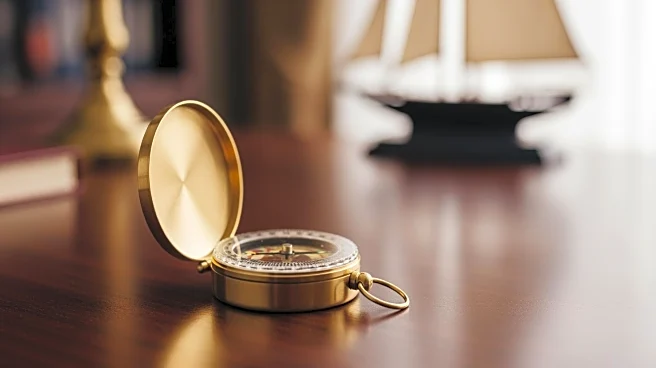What's Happening?
The feathered headdress attributed to Aztec emperor Moctezuma, known as 'el penacho,' remains a point of contention between Mexico and Austria. Mexican officials have long sought its return, viewing it as a cultural
touchstone, while Austrian officials maintain that the artifact is too fragile to move from Vienna's Weltmuseum. The headdress, made from hundreds of quetzal feathers and gold ornaments, is a symbol of national identity in Mexico and a treasured possession in Austria. Despite its historical significance, there is no evidence that Moctezuma actually wore it.
Why It's Important?
The dispute over Moctezuma’s headdress highlights broader issues of cultural appropriation and the repatriation of artifacts. As museums worldwide face pressure to return items acquired under questionable circumstances, this case exemplifies the complexities involved in balancing cultural heritage with preservation concerns. The headdress serves as a symbol of Mexican identity and history, and its return is seen by many as a matter of national pride. The ongoing debate reflects the challenges in resolving historical grievances and the importance of cultural diplomacy.
What's Next?
The controversy is likely to continue as Mexican officials and activists push for the return of the headdress. Austria's Weltmuseum may face increasing pressure to reconsider its stance, especially as global discussions on cultural restitution gain momentum. Future negotiations could involve diplomatic efforts to find a compromise that respects both preservation needs and cultural significance. The case may also influence policies and practices regarding the repatriation of cultural artifacts worldwide.
Beyond the Headlines
The debate over the headdress raises ethical questions about the ownership and display of cultural artifacts. It underscores the need for international cooperation in addressing historical injustices and fostering mutual respect for cultural heritage. The case also highlights the role of museums in shaping narratives and identities, and the potential for cultural diplomacy to bridge divides.
